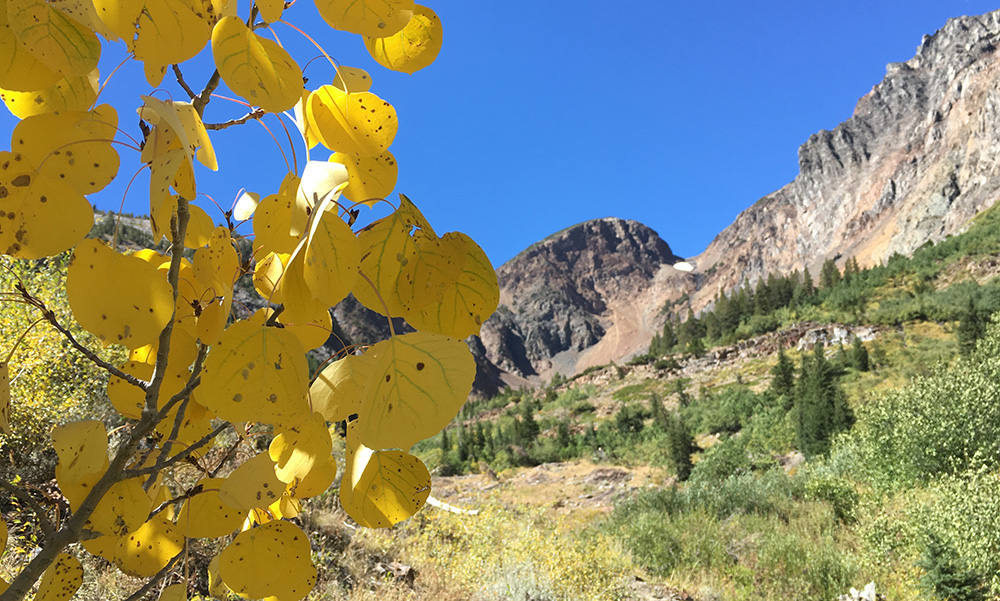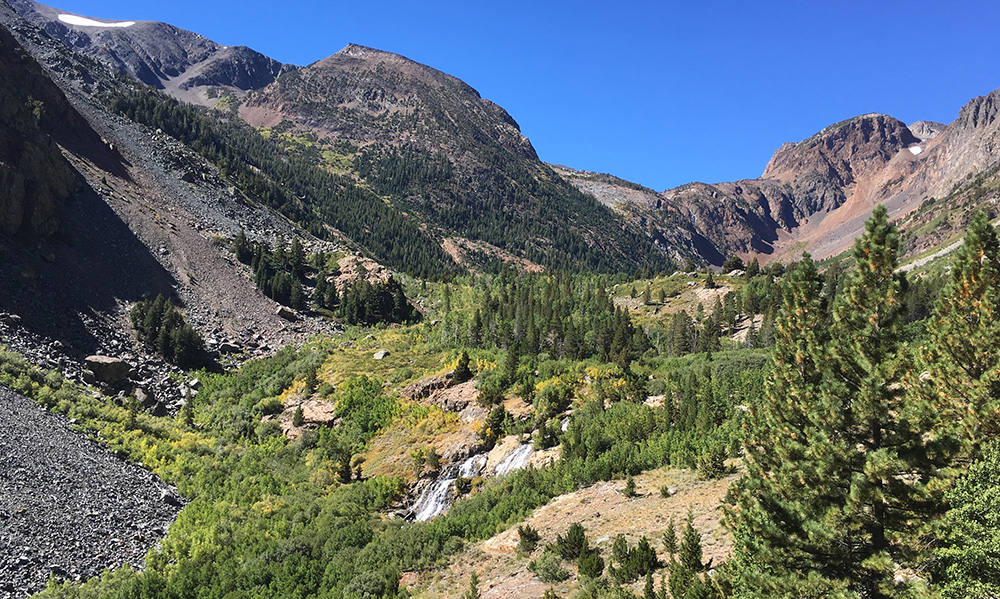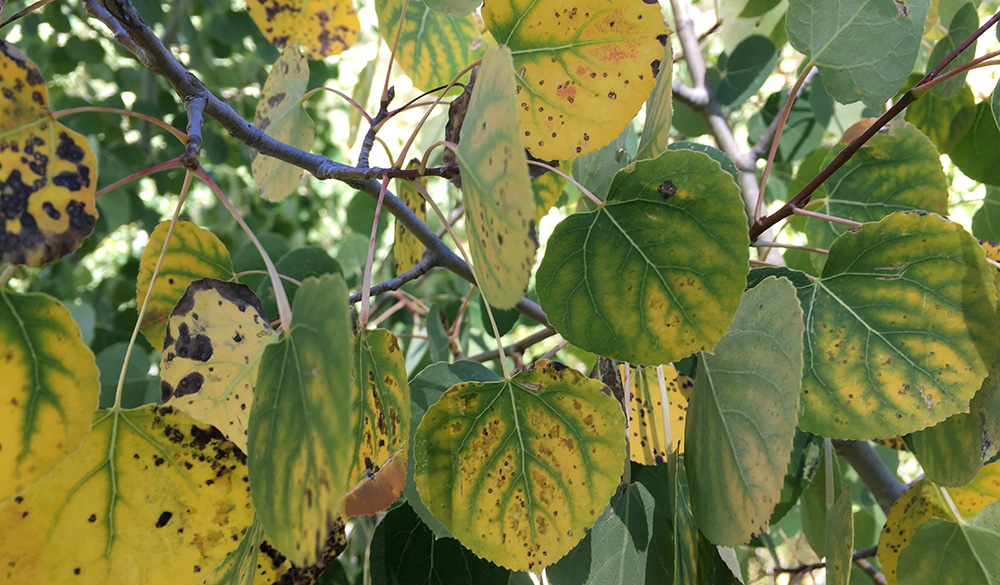
This post was written by Max Price, 2018 Mono Lake Intern.
It’s that time of year again! Yes, we are already halfway through September and the first official day of fall is just around the corner. As we welcome the cooler mornings, migrating Eared Grebes, and the occasional high-elevation snow flurry, we can also look forward to the much-anticipated fall colors. If fires or a busy schedule kept you from visiting Mono Basin this summer, don’t fret! You still have an opportunity to catch a glimpse of what helps make the basin so spectacular—the changing hues of vibrant aspen trees.

Fall colors haven’t quite started to display in the Mono Basin quite yet, but within the next week we can expect to see some hints of yellow or orange streaks, especially at the higher elevations. Mid-September to mid-October is generally the best time for fall color viewing, but it is nearly impossible to predict peak colors at each grove. Excellent views of the aspens can be had in Lee Vining Canyon and near Tioga Pass, up Lundy Canyon, on Conway Summit, around the June Lake Loop, or on Parker Bench. For the most up-to-date information about local conditions, give us a call at (760)-647-6595. Other good resources are Mono County Tourism’s fall color guide and California Fall Color. Make sure to book your hotel rooms soon—the astonishing foliage attracts many visitors and rooms fill quickly.

If you’re interested in a guided tour to some of the picturesque aspen groves in the Mono Basin, at the peak of their fall color, check out some of the field seminars we have coming up! Lead Naturalist Guide Nora Livingston will be leading half-day Fall Color Foray field seminars on October 3, 11, and 15. Also, there will be a Mono Basin Fall Photography seminar lead by Robb Hirsch on October 12–14, as well as an Arborglyphs & Aspen Natural History seminar lead by Richard Potashin and Nancy Hadlock on October 13–14.

The kaleidoscopic colors of autumn aspen trees happen because of chemical reactions taking place within the leaves. Throughout the summer, a chemical called chlorophyll produces energy for the tree while also giving the leaves their green color. The abundance of chlorophyll in the leaves masks the orange and yellow pigments that are also within the leaves. As the days shorten and temperatures drop, the chlorophyll begins to break down and its green color starts to fade, allowing the other pigments a chance to display their beauty. The result of this reaction is the breathtaking mosaic of gold, crimson, and bronze flowing down out of the Sierra valleys. Because of a number of variables such as temperature, day length, wind speeds, and occurrence of rain or snow, exact conditions at each grove vary. This leads to a variety in color and brilliance throughout the Mono Basin—no two groves will be alike this season.
If you’re exploring on your own, stop by the Mono Lake Committee Information Center & Bookstore, open daily from 9:00am to 7:00pm, for the latest fall color updates. We look forward to seeing you and helping you enjoy the beauty that Mono Basin has to offer!
